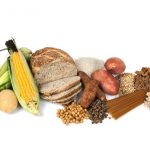
Dietary fibre is an important nutritional consideration. The dietary fibre definitions in the EU have been revised both in terms of definition and measurement over a number of years and in the USA too.
Definitions In the EU
The European Union defines dietary fibre in EU regulation 1169/2011. This is the reference document that states dietary fibre are carbohydrate polymers of three or more monomeric units which are digested nor absorbed in the human small intestine and belong to particular categories:-
-
edible carbohydrate polymers naturally occurring in the food as consumed,
-
edible carbohydrate polymers which have been obtained from food raw material by physical, enzymatic or chemical means and which have a beneficial physiological effect demonstrated by generally accepted scientific evidence,
-
edible synthetic carbohydrate polymers which have a beneficial physiological effect demonstrated by generally accepted scientific evidence.
The FDA has a very similar definition which also refers to ‘non-digestible soluble and insoluble carbohydrates (with 3 or more monomeric units), and lignin that are intrinsic and intact in plants; isolated or synthetic non-digestible carbohydrates (with 3 or more monomeric units) determined by the FDA to have physiological effects that are beneficial to human health’.
Both definitions almost meet the 2009 Codex Alimentarius definition but they differ on how many monomers constitute a carbohydrate polymer. The Codex specifies 10 or more whilst the USA and EU define it as three or more. It is up to the national bodies to decide whether or not to include the additional carbohydrate with 3 to 9 monomers.
In the USA, they also now refer to dietary fibre as non-starch polysaccharides (NSP fibre or just AOAC fibre). The initials NSP refers to the polysaccharides of the plant cell wall components characteristic of plant foods, such as wholegrain cereals, fruits and vegetables. AOAC fibre has a slightly different distinction because of the methodology of analysis which includes NSP plus lignin and resistant starches. That also means the AOAC fibre definition includes added synthesized fibre as well. The AOAC fibre is always equal to or higher than the NSP value.
The European Food Safety Authority (EFSA) uses the AOAC fibre value as its basis for intake recommendations. The FAO and WHO refer to NSP fibre and base their references and recommendations on that value.
Fibre Labelling in the EU
Fibre content on labels in the EU is voluntary.
Food energy content is mandatory and has to be reported in the nutrition declaration section of labels. Fibre has a calorific value. It is also a source of metabolic energy and averages 8 kJ (2kcal) per gram. It has to be taken into consideration on energy labelling.
Based on Regulation (EC) No. 1924/2006, nutrition claims are permitted for fibre:
- Source of fibre: ‘A claim that a food is a source of fibre, and any claim likely to have the same meaning for the consumer, can only be made where the product contains at least 3 g of fibre per 100 g or at least 1.5 g of fibre per 100 kcal’
- High in fibre: ‘A claim that a food is high in fibre, and any claim likely to have the same meaning for the consumer, can only be made where the product contains at least 6 g of fibre per 100 g or at least 3 g of fibre per 100 kcal’


Leave a Reply